This article is part of the #CuraDaTerra essay series, focused on Indigenous perspectives and alternatives to industrial capitalism. Taken from Kosmos, journal for global transformation.
Certain humans have plotted for centuries to kill the Amazon. Photographic evidence confirms that this scheme is now reaching a flaming, thundering crescendo, with tens of thousands of intentional fires and bulldozers tearing through the Amazonian rainforest, destroying acres every second.
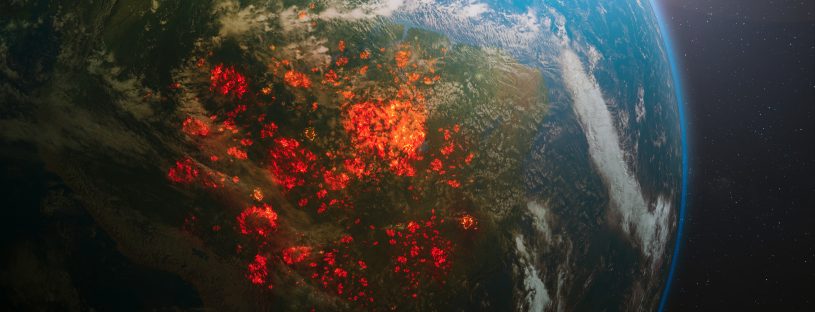
We hasten to add that other humans are innocent bystanders, while yet other humans go further and have a plan to save that vast ecosystem.
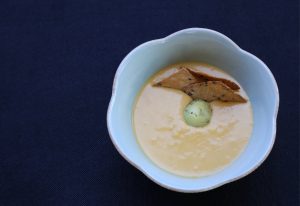
But we have gotten well ahead of our story; first let’s enjoy a delicious bowl of peach-palm soup. For us, the soup’s richness dominates the culinary experience. In both aroma and color there is a suggestion of squash, but that hint of sweet flavor is secondary to the dense, opulent texture that coats one’s mouth like whipped butter.
Or when we’re ravenous and need survival calories, we just stew the fruits in salted water, peel them, and eat what seems like the world’s finest roasted chestnut. We have a farm on the Caribbean slope of Costa Rica, and in that nation it’s easy to find stewed peach palms on street corners or in mercados. Just don’t call it a peach palm. In Costa Rica it’s called pejibaye (pay-he-bah-jhay), but we don’t try to pronounce it when our mouths are filled with the delicacy.
But what does this culinary excursion have to do with an investigation of Amazonian ecocide? Truth be told, it’s not a detour at all. It’s an important part of the journey, for us and for the pejibayes.
Pejibayes are historically the most important palm of the Costa Rican humid tropics, offering up both fruit and palm hearts that fed the Indigenous peoples of this Central American paradise. Indeed, when European conquerors first came to Costa Rica, they observed upwards of 30,000 pejibaye trees planted in Costa Rica’s Talamanca region by Indigenous peoples. These trees, in turn, were brought to the land from the Amazon by the first human settlers of this region. In many ways, the indigenous Amazonian settlers on the Caribbean slope of southern Costa Rica were People of the Pejibaye, and this Caribbean slope is a northern extension of the Amazon.
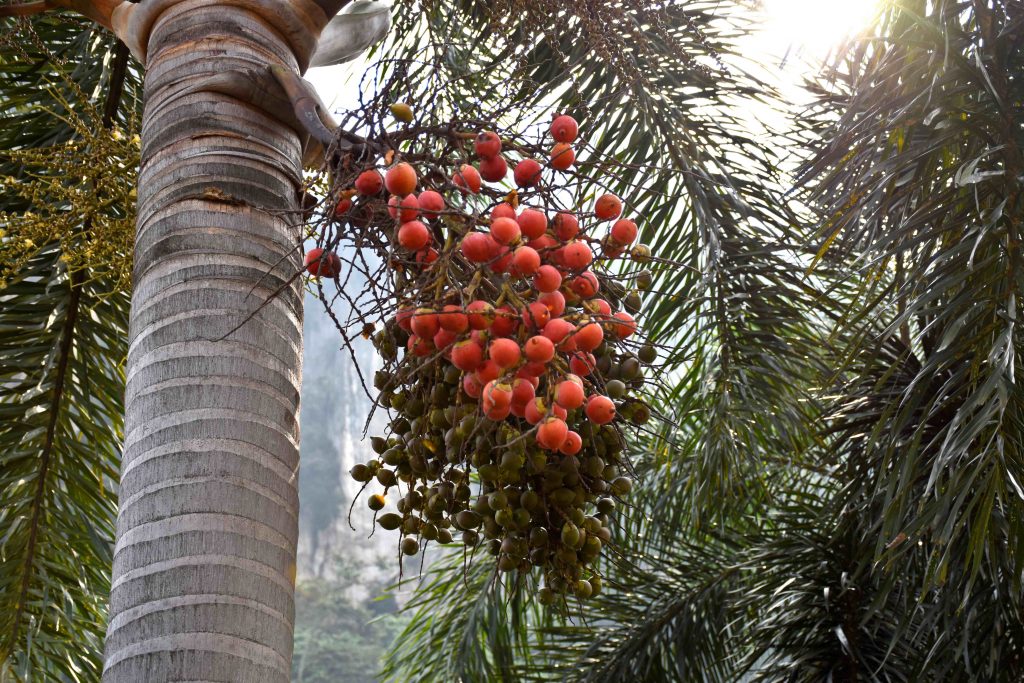
But thirty-thousand pejibaye palms were, for the conquistadores, thirty-thousand too many. The conquistadores wanted to plunder gold and enslave those Indigenous peoples, and the last thing the Europeans needed was a well-fed populace that could find food everywhere in the forest. While there wasn’t any gold to be stolen (turns out that Costa Rica was a misnomer), there were people to be enslaved and the Europeans had the idea to cut down the pejibaye trees. No food in the forest meant the Indigenous communities would either starve or be forced out of hiding and easier to subjugate, so down came the peach palms.
Let’s review the evidence: some folks planted peach palms in a way that enriched the genetic diversity of the rainforest. Others simply ate the fruits and palm hearts. And the conquistadores? They’re the damn fools who tried to chop them all down.
You see, it’s not humanity that’s at fault. The criminality is not an immutable characteristic of the species Homo sapiens sapiens. Rather, the ecocidal behavior is borne of the paradigm of domination and exploitation that, over time, has resulted in the total destruction of approximately 20% of the Amazon and the degradation of far broader regions.
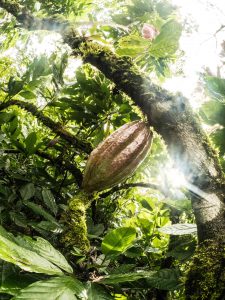
The Amazon today is depleted, imperiled, and at the cusp of losing functionality as a viable forest ecosystem. And when that happens, what will happen to all the lifeforms that rely on the rainfall, oxygen, and medicines created from this glorious region? Are you prepared to find out if we humans can survive the loss of the world’s greatest rainforest?
While pondering that question, let’s also ask ourselves this: If the European colonial mindset of domination and exploitation drives the destruction, are there other mindsets or mythologies that lead to regeneration and rainfall? To begin to answer that question, let’s refer back to the Amazonian settlers of the Caribbean slope of southern Costa Rica. As we’ve noted, when those Indigenous peoples came to Central America, they brought with them pejibayes, together with other culinary treasures like acai, sapote, and cacao.
The Indigenous Amazonian settlers created functional art that consecrated their sacred relationship with those fruiting trees.
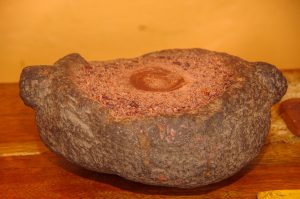
And they flourished. While we once pictured Pre-Columbian America as an unpopulated “First Eden”wilderness, we now understand that Indigenous peoples numbered in the tens of millions and created rich and complex societies. Their history (not at all pre-historic) teaches us that with the right mindset, we can have our forest and eat it, too. And that right mindset is finding modern expression in the many agricultural practices that fall under the broad term “regenerative.”
Regenerative agriculture is growing food in a way that, year after year, enhances the ecosystem. This is not a new concept: Indigenous peoples of the Amazon were intertwined with a paradigm that led them to “anthropogenically” manage the forest by enriching its soils (“terra preta” or “Amazonian dark earth”) and agro-ecologically plant Brazil nuts, cacao, pejibaye, ice-cream bean trees, tree grapes, and other species. Large portions of today’s Amazon are scientifically recognized as “anthropogenic,” just as much a human invention as the grim monoculture farming grids now occupying what used to be the Great Plains.
The difference is that Indigenous peoples of the Amazon figured out that it made long-term sense to improve soil fertility, whereas current agricultural malpractice is destroying soils and ecosystems so rapidly that the United Nations predicts the planet now has only 60 harvests of food left before the soils can no longer support food production. The concept of a “Last Supper” takes on urgent modern significance when you realize that our children and grandchildren might not have enough soil to sustain their existence.
What would happen if we eradicated the destructive, extractive, and exploitative mindset that is ravaging the Amazon and replaced it with one based on regenerative agriculture, a template for ecologically rational food production that, as we wrote earlier, was co-created in the Amazon? Imagine all of Amazonia – all of its now diverse population – devoted to soil and overall ecosystem health. Imagine the Amazon becoming a model of planetary renewal and regeneration and how that could inspire a planetary revival.
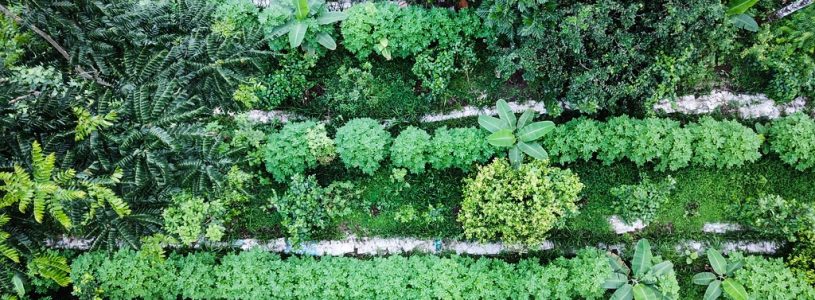
What, then, can we learn from the early Amazonian settlers who came to Costa Rica with their pejibaye, acai, and cacao? They met that ecosystem on its terms and didn’t try to turn a forest on the Caribbean slope into a savannah. In some deep way they appreciated that biodiversity was the friend of long-term survival. And they did survive, for thousands of years, until they were deracinated by murderous European colonizers bent on exploitation and enslavement.
Can we recreate the extraordinary success of the Original Peoples of the Amazonas? Is it possible in the Amazon and forested areas around the world to produce ample food based on tree crops that enhance an ecosystem? Of course, and regenerative successes abound throughout the Americas and across the globe. If you research terms like agroecology, agroforestry, syntropic farming, or permaculture you’ll tap into the exciting explorations of this generation’s food producers who are going “back to the future.”
All over the world regenerative farmers and ranchers are learning that thrilling lesson – work with Nature instead of against it and you will improve your land and economic benefit. And you will no longer be dependent on expensive synthetic inputs to grow your food.
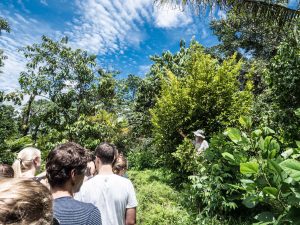
a maturing nutmeg tree in our regenerative food forest
Many of us in the regenerative movement are re-learning how to farm like the Indigenous peoples of the Amazon farmed: using time-tested and solar-powered photosynthesis to convert atmospheric CO2 into carbohydrates (a/k/a sap) and letting the countless infinities of soil microbes working at the root tips turn that liquid sunshine into the life-sustaining soil organic matter upon which all enduring civilizations have been built. We’re following the emerging science, which shows that regenerative agro-ecology sequesters forty tons of carbon per hectare per year, helping the planet respond to the climate crisis that is now upon us. We’re rebuilding soil so that our descendants will still be able to produce abundant and nourishing food for generations to come.
We’re grateful to the Indigenous peoples of Amazonia for being custodians of the ancient wisdom of regenerative food production. There is a reason the Indigenous peoples of the Amazon are described as Cura Da Terra – the Cure of the Earth – as they holding the living possibility of human beings as a companion species within the global ecosystem.
And we’re grateful to pejibaye, cacao, and myriad plants for offering nourishment to sustain human culture. Their survival is our survival. May the life-force of Amazonian dark soil be a blessing to all who love the forest and strive to live within its essential embrace. May the Indigenous peoples of the Amazon, and indeed, globally, continue to lead us back to sanity.
Photos | Courtesy Finca Luna Nueva, and Shutterstock

ABOUT LARRY KOPALD
Larry Kopald is President and Co-Founder of The Carbon Underground. He spent ten years each on the boards of Greenpeace, 1% For The Planet, and Oceana. Kopald’s strategic work has twice been profiled in the Harvard Business Review, and his creative work has been nominated for both Grammy and Emmy awards.
He is currently a Senior Fellow at USC’s Marshall School of Business, and served on the White House Panel on Social Innovation under President Obama.
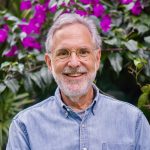
ABOUT TOM NEWMARK
Tom Newmark is the co-founder and board chair of The Carbon Underground, co-founder of the Soil Carbon Initiative and a founding member of that standard’s Design Team, past board chair of the Greenpeace Fund USA, and a founding member of the Leadership Council of the Center for Regenerative Agriculture and Resilient Systems at California State University – Chico. He is also the past board chair of the America Botanical Council, publisher of the peer-reviewed journal HerbalGram.
He is the co-owner of Finca Luna Nueva Lodge, a farm and ecolodge in the mountainous rainforest of Costa Rica that teaches regenerative agriculture. www.fincalunanuevalodge.com

